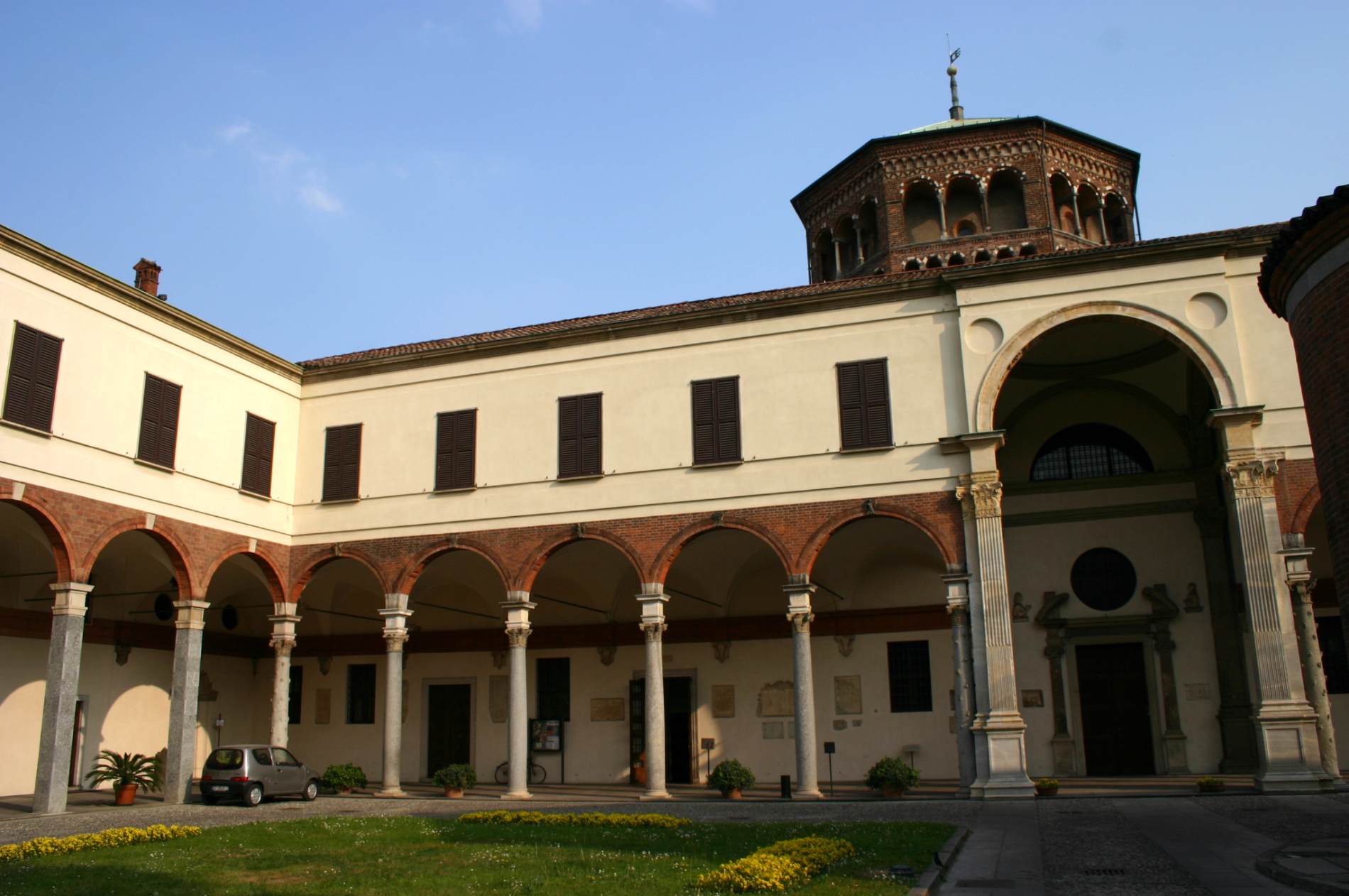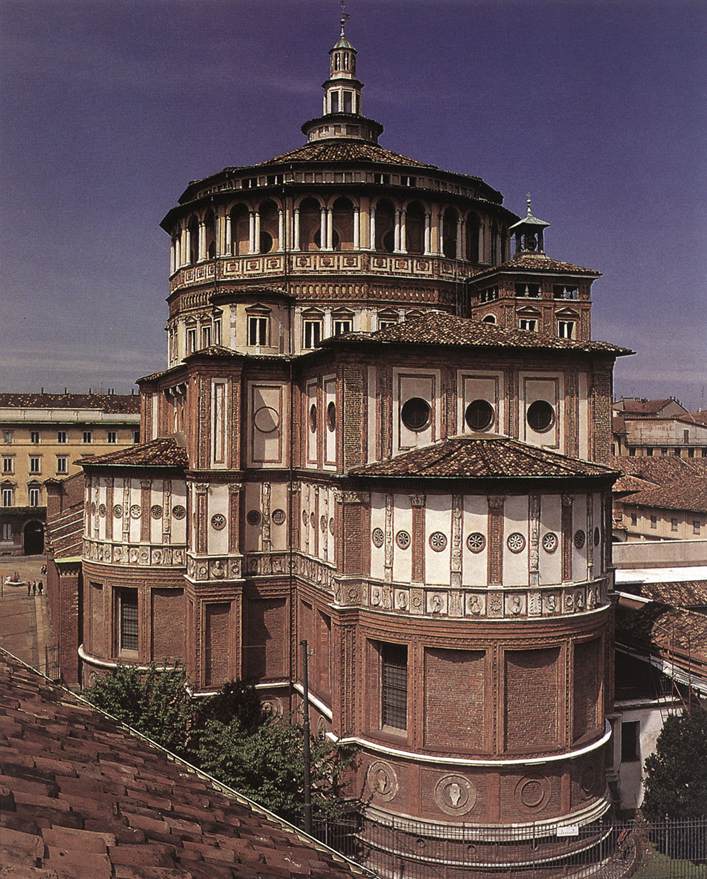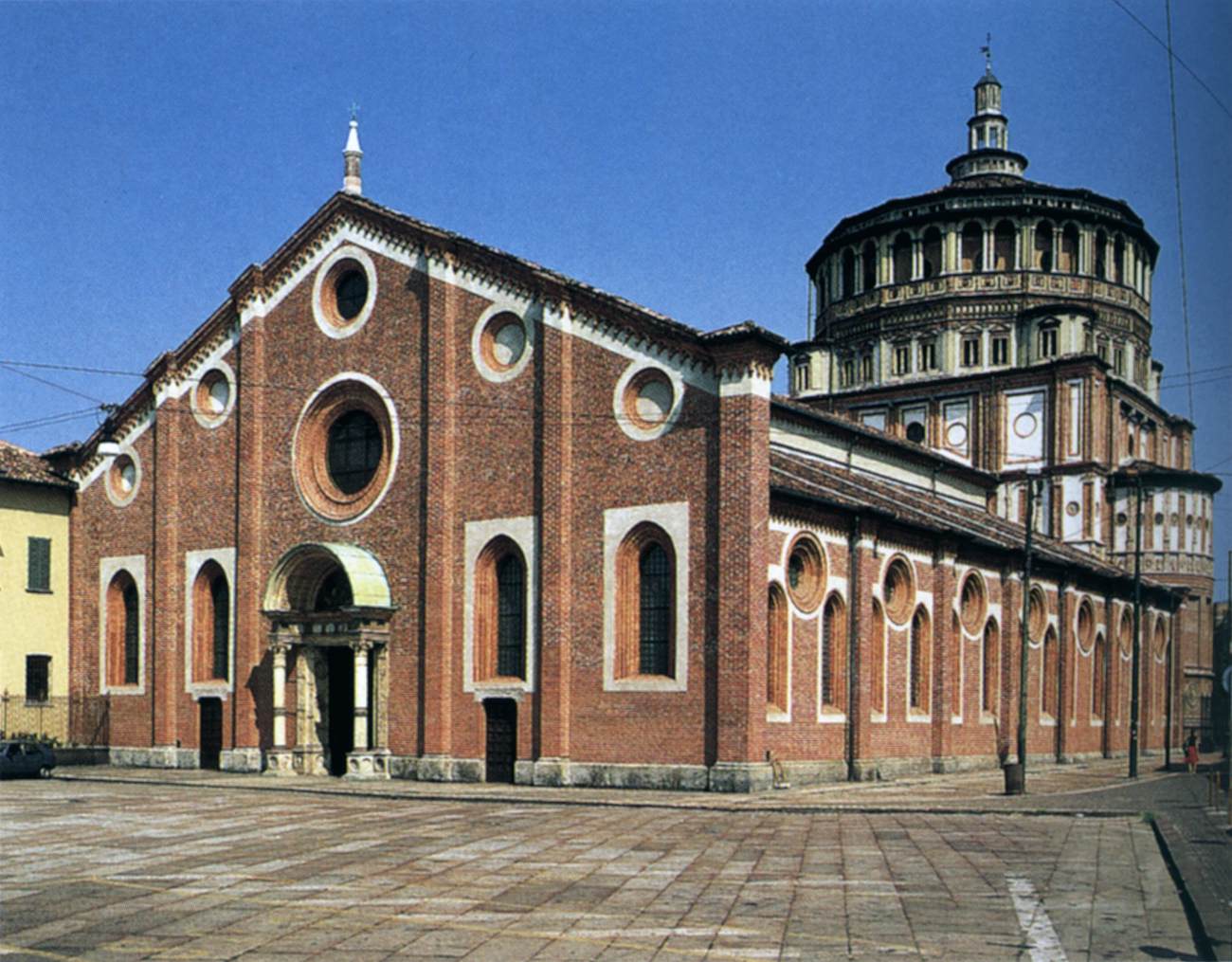Italian architect who introduced the High Renaissance style in architecture. His early works in Milan included the rectory of Sant'Ambrogio and the church of Santa Maria delle Grazie. In Rome, Bramante served as principal planner of Pope Julius II's comprehensive project for rebuilding the city. St. Peter's Basilica, of which he was the chief architect, was begun in 1506. Other major Roman works were the Tempietto at San Pietro in Montorio (1502) and the Belvedere court in the Vatican (begun c. 1505).
Donato Bramante was born of a family of well-to-do farmers. Little is known of Bramante's life and works before 1477. He probably served as an assistant to Piero della Francesca in Urbino, which, under the nobleman Federico da Montefeltro (died 1482), had become a humanist centre of considerable importance. In 1477 Bramante was working in Bergamo as a painter of illusionistic murals of architecture. None of Bramante's youthful productions has survived.
By 1477 Bramante had left Urbino and settled in Lombardy. He worked on frescoes for the façade of the Palazzo del Podestà (later altered) in Bergamo showing Classical figures of philosophers in a complex architectural setting. Vasari says that Bramante, after working in various cities went to Milan to see the cathedral. The cathedral workshop, in which Italian, German, and French craftsmen worked by turns, constituted an important centre for the exchange of knowledge, planning methods, and techniques. The city represented an opportunity for a young and up-to-date architect like Bramante.
The first architectural work that can be definitely attributed to Bramante is a design: a print made in 1481 by a Milanese engraver, Bernardo Prevedari, from a Bramante drawing representing a ruined temple with human figures. About the same time, Bramante was working on the church of Santa Maria presso San Satiro, the first structure definitely attributed to him. Along with a certain adherence to local taste, this church shows traces of the influence of Alberti, Mantegna, Brunelleschi, and the Urbino school. This last influence is particularly evident in its choir, which was painted in perspective to give an illusion of a much larger space. Perhaps from the same period (c. 1480-85) is Bramante's decoration of a room in Casa Panigarola in Milan (fragments in the Brera, Milan) that consists of architectural settings and the figures of men at arms rendered by means of illusionistic perspective.
In 1488 Bramante, along with a number of other architects, was asked by Cardinal Ascanio Sforza, brother of Ludovico Sforza and bishop of Pavia, to draw up a new plan for the cathedral of Pavia. Architecture increasingly dominated his interests, but he did not give up painting. Of the many works attributed to him by various 16th-century writers, however, none seems to have been preserved. The only extant easel picture that has ever been attributed to him is the Christ at the Column of the Abbey of Chiaravalle (c. 1490). A fresco depicting Argus in a complex architectural setting (1490-92) in the Castello Sforzesco in Milan is probably his, with the collaboration of his pupil Il Bramantino.
His last few years in Lombardy were marked by the restless activity that characterized the remainder of his career. He was probably responsible for the designs of the piazza of Vigevano (carried out between 1492 and 1494, partly transformed in the late 17th century), of the painted architectural decoration on the arcaded facades that marked its limits, and for the designs of other structures of the Vigevano complex.
Bramante probably remained in Milan until 1499. He appears to have been active from the first in Rome on a variety of projects. As under-architect of Pope Alexander VI, he probably executed the fountains in Piazza Santa Maria in Trastevere and in St. Peter's Square (later altered) and served on several architectural councils. It is probable that in these years he had reduced his activity as a designer and was devoting himself to the study of the ancient monuments in and around Rome, even ranging as far south as Naples. In the meantime, he had come in contact with Oliviero Carafa, the wealthy and politically influential cardinal of Naples. Carafa commissioned the first work in Rome known to be by Bramante: the monastery and cloister of Santa Maria della Pace (finished 1504). Bramante seems to have been engaged in 1502 to begin the small church known as the Tempietto in San Pietro in Montorio, on the site where St. Peter was said to have been crucified.
The election of Pope Julius II in October 1503 began a new phase in Bramante's work - the grand, or mature, manner. As early as 1505, Bramante designed the immense courtyard of the Belvedere, extending the nucleus of the older Vatican palaces to the north and connecting them with the pre-existing villa of Innocent VIII. Though the work was carried forward with great speed, the scale was so large that on the death of Julius II, in 1513, and of Bramante himself, in 1514, it was still far from completion. The project, which continued throughout the 16th century and later, suffered so many changes that today Bramante's concept is almost unrecognizable.
Beginning in 1505, at first in competition with two other architects, Giuliano da Sangallo and Fra Giocondo (1433-1515), Bramante planned the new Basilica of St. Peter in Rome - his greatest work and one of the most ambitious building projects up to that date in the history of humankind. The first stone was placed on April 18, 1506. The project's site had to be cleared first of the old, crumbling Basilica of Constantine. Bramante's part in its demolition earned him the nickname of "Maestro Ruinante" or "Master Wrecker." At the time of his death the new construction had scarcely begun to take shape.
Despite the grandiose scale of the St. Peter's undertaking, Bramante continued to work on lesser projects. Between 1505 and 1509 he carried out an enlargement of the choir of the church of Santa Maria del Popolo, some construction work in Castel Sant'Angelo, and a remodelling of the Rocca di Viterbo. In addition, in 1506, as a military engineer, he accompanied the pope to Bologna.
About 1508, when Julius II's new city plan for Rome began to be put into effect, Bramante played an important role as architect and town planner. The west façade of the Vatican Palace (now the side of the San Damaso courtyard) was also constructed according to his design, though it was later taken up and completed by Raphael.
Another noteworthy design was that of the Palazzo Caprini (House of Raphael; later destroyed) in the Borgo, which became the model for many 16th-century palaces. This palazzo was later acquired by Raphael. According to Vasari, Bramante, about 1509, had designed the architectural background for the School of Athens by Raphael (1508-11; Vatican, Rome), and in return, Raphael represented Bramante in the fresco in the guise of Euclid.
After the death of Julius II, Bramante, though elderly and perhaps in declining health, remained in favour under Pope Leo X.
//
![]()









